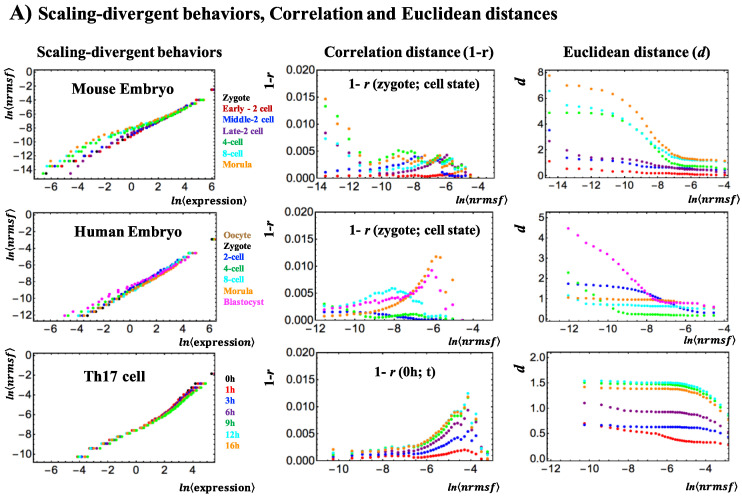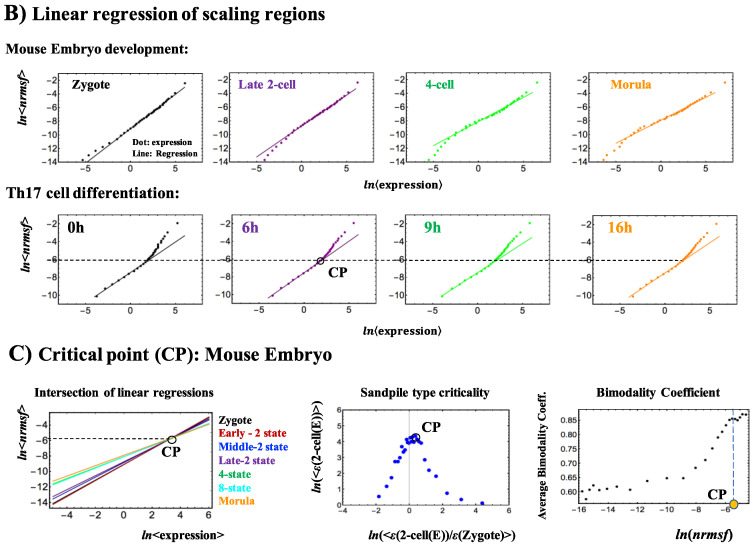Figure 3.
Scaling-divergent behaviors and critical points: (A) First column: Genome avalanches, scaling-divergent behaviors in overall expression, as important features of the SOC control of overall expression are evident in the log-log plot of average behaviors: mouse (first row), human (second) embryo development and Th17 immune cell differentiation (third). Second column: Correlation distance, expressed as (1 − r), where r is the Pearson correlation coefficient between the gene-expression profiles in the zygote and other development states (mouse: first row and human: second row) and between t = 0 and other time points (tj) (Th17). This distance corresponds to the relative change in the expression profile on the whole-genome scale. The results show that there is a difference in scaling-divergent behaviors: in mouse and human embryo, correlation behaviors significantly change at low and middle nrmsf, respectively, whereas in terminal Th17 cell, significant change occurs at high nrmsf. Third column: Euclidean distance from the initial-state response (zygote state for embryo development and response at t = 0 for Th17 cell) shows that two distinct biological processes (reprogramming in early embryo development versus immune cell differentiation) show opposite scaling-divergent behaviors. Scaling behavior (i.e., constant behavior in Euclidean distance) occurs in the ensemble of high-variance RNA expression (region of high nrmsf) in early embryo development, and divergent behavior occurs in the ensemble of low-variance RNA expression (region of low nrmsf: sub-critical state), whereas the T cell terminal cell fate (single cell) has opposite behaviors. Log-log plots represent the natural logarithm of the group average (< >) of expression (x-axis) and nrmsf (y-axis) (n = 485 (mouse), 475 (human), and 375 (Th17) for each dot), where overall expression is sorted and grouped (35 groups) according to the degree of nrmsf (Appendix A); (B) Linear regression of scaling regions in the scaling-divergent behaviors; mouse embryo development (upper row) and Th17 cell differentiation (lower row); (C) critical point: in mouse embryo development, a summit (CP) of sandpile criticality (middle panel) corresponds to a tipping point of transitional behavior of the bimodality coefficient (right) and, furthermore, to the intersection of linear regressions (left) (see more in [4]). This suggests that the CP is fixed during early mouse embryo development. In Th17 cell differentiation, the CP corresponds to the onset of divergent behaviors, which is also fixed in single-cell differentiation (see (B)).


